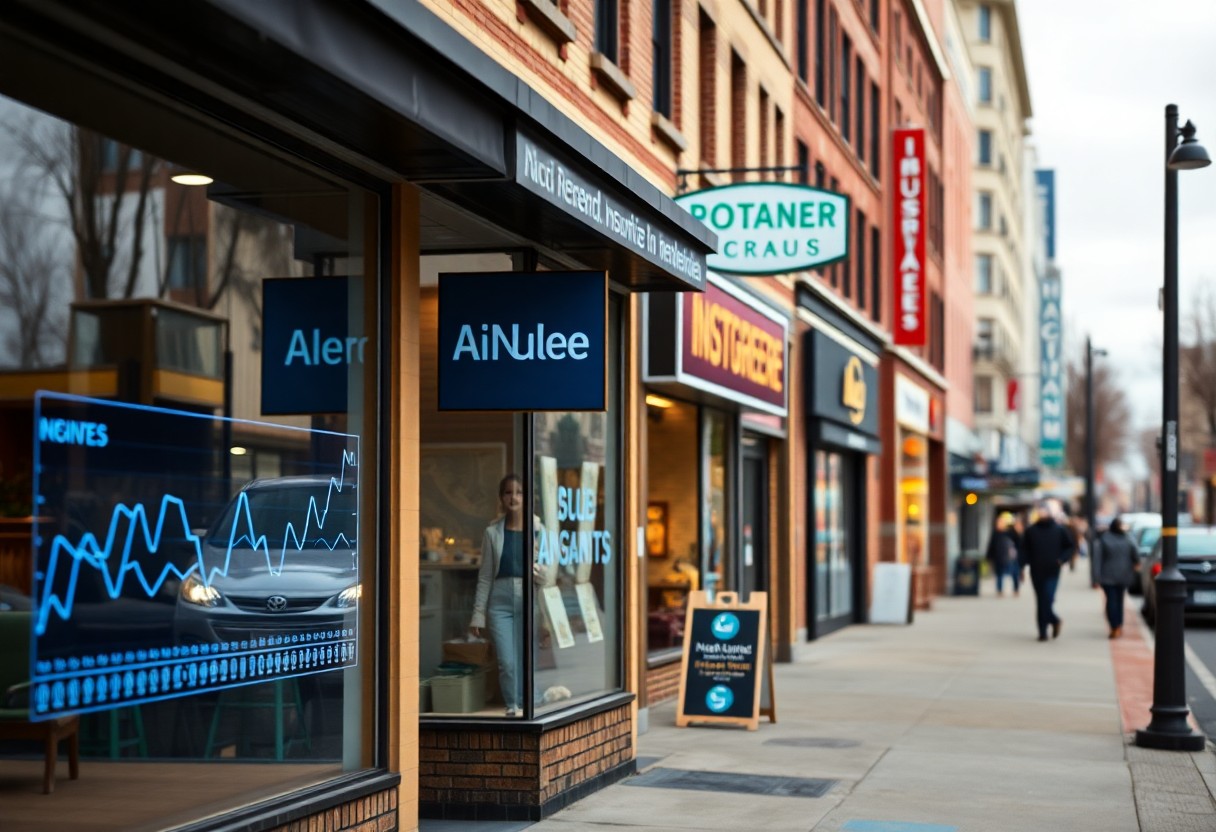Guide to Launching an AI-Powered Blog
Serendipity favors the bold, and you are about to investigate the future of content creation. Launching an AI-powered blog isn’t just some tech fancy—it’s your gateway to cutting through the noise and hitting your audience with precision and power. Your challenge? Master the tools, spot the trends, and keep your voice authentic while letting AI do the heavy lifting. This guide breaks down every move, so you never get stuck spinning wheels on tech or strategy. It’s time to hustle smart and launch a blog that’s as relentless as your ambition.
Understanding AI-Powered Blogging
While the blogging landscape has always been dynamic, integrating AI into your content strategy is a total game-changer. It’s not just about automating tasks; it’s about amplifying your creativity and efficiency to levels you never thought possible. If you’re serious about making your blog stand out and consistently delivering high-quality content. Then getting a grip on AI-powered blogging is where you start winning.
By harnessing AI tools, you can focus more on your unique voice and less on repetitive tasks. This shift means you’re not just keeping up with the competition—you’re setting the pace. The blend of human insight and machine intelligence creates an exciting synergy. T\that fuels smarter decisions and sharper storytelling, helping you connect deeper with your audience and build real influence.
What is AI-Powered Blogging?
There’s a lot of noise about AI, but when it comes to blogging, AI-powered blogging means leveraging smart software to assist in creating, optimizing, and promoting your content. This includes everything from AI-generated drafts and headline suggestions to SEO enhancement and analytics interpretation. Rather than replacing your voice, AI acts like your digital partner, turbocharging your workflow and creativity.
Think about having a tireless assistant who can analyze trends, help you brainstorm topics, or even craft engaging copy based on your unique style—this is what AI-powered blogging delivers. You’re still the captain, but now you’ve got a co-pilot who doesn’t sleep, constantly working to help your blog reach its full potential.
Benefits of AI in Blogging
An AI-powered approach is like putting your blog on steroids for productivity and growth. It slashes the time you spend on mundane tasks, such as keyword research or editing, so you can get back to what matters most—creating killer content that resonates. Plus, AI tools often reveal insights about your audience and content performance that you’d never catch on your own, giving you an unfair advantage to tailor your strategy effectively.
With AI, you not only boost efficiency but also up your game in quality. AI can help you avoid common pitfalls like keyword stuffing or inconsistent tone, ensuring your content is both reader-friendly and optimized for search engines. This means your blog can attract more traffic and keep visitors hooked longer, turning casual readers into loyal followers. The smart use of AI in blogging is about working smarter—and that’s the hustle you want.
Understanding how AI fits into your blogging workflow empowers you to automate boring tasks without sacrificing authenticity. It also opens doors to experimentation with content formats and styles that might have seemed too time-consuming before. But be mindful: over-relying on AI’s output can dull your unique voice, so the key is striking the perfect balance, turning AI into a tool that elevates your storytelling rather than replaces it.
Setting Up Your Blog
Some of the most powerful moves you can make when launching your AI-powered blog start with how you set up the foundation. You’re not just creating a blog; you’re building a digital asset that can grow exponentially if you get the basics right from the beginning. This is where your vision meets the tools and strategies that will ultimately drive your success. It’s about aligning your purpose with the right resources and setting yourself up for scalable growth.
By investing the time upfront to nail your setup, you’re throwing fuel on the fire of your future influence. Everything else—content creation, promotion, audience engagement—flows from these initial choices. So get your blog structure solid, pick intelligent tools, and then let your AI-powered system amplify your voice to the world.
Choosing Your Niche
While it might be tempting to target every trendy topic under the sun, your blog’s real power comes from the laser focus of your niche. When you pick a niche that aligns with your passions and expertise, you’re setting yourself up to deliver authentic, valuable content that resonates deeply with your audience. This is where you build trust and authority—two things that can’t be faked, no matter how savvy your AI tools are.
Choosing a broad or oversaturated niche can bury your blog before it even starts. Instead, zone in on that sweet spot where your knowledge intersects with market demand. Start by examining what problems you can solve uniquely better than anyone else and how you want to add fresh perspective. This strategic focus lets your AI content creation work smarter, not harder, driving real engagement and sustainable growth.
Selecting a Blogging Platform
Any blogging platform you choose is going to be the backbone of your entire online presence, so take this decision seriously. Think of it like choosing your home; you want it to be adaptable, reliable, and capable of growing with you. Platforms that integrate seamlessly with AI tools and allow for customization will maximize your ability to scale and optimize your blog.
Whether you pick WordPress for its flexibility, Squarespace for its ease of use, or a newer platform built specifically for AI content automation, make sure it meets your operational needs and fits your skill level. You’re building an AI-powered powerhouse here, so don’t settle for anything less than a platform that can handle advanced features like chatbots, content scheduling, and SEO automation.
Platform selection can either be your biggest accelerator or a hidden bottleneck. You’ll want to look for platforms that offer robust plugins or built-in AI integration options to supercharge your content creation and site management. If the platform limits your AI capabilities or has clunky workflows, it could stall your progress and frustrate your creative flow. On the flip side, platforms that provide flexible APIs and automation-ready tools give you the edge to create, test, and scale with brutal efficiency.

Integrating AI Tools
There’s no getting around the fact that to launch a killer AI-powered blog, you’ve got to weave AI tools seamlessly into your content strategy. These tools aren’t just fancy add-ons; they’re your secret weapons in the battle for attention online. You don’t want to waste energy on manual tasks that AI can handle faster and smarter. By integrating these tools, you’re not only saving time but unleashing your creativity on a whole new level. It’s all about working *with* AI to elevate your game and connect with your audience in a way that feels fresh, engaging, and authentic.
But don’t get it twisted—AI integration isn’t just plug-and-play. You’ve got to be strategic. Know which tools align with your style, goals, and audience demands. Once you hit that sweet spot, these AI tools will supercharge your content creation, optimize your blog for search engines, and turbocharge your analytics, so you always know what’s working and what’s not. It’s about playing smarter, not harder.
Content Generation Tools
The core of any AI-powered blog lies in content generation tools. You’re looking at platforms that can draft blog posts, create catchy headlines, even generate ideas when you’re staring at a blank screen. These tools act like your brainstorming partner, always ready with fresh angles and copy that captures your voice. More importantly, they let you crank out content consistently, which is how you build momentum and grow your readership. If you want to stand out, you’ve got to keep feeding the content machine.
But don’t fall into the trap of dumping out generic AI-produced text. Your job is to add that human touch, flex your personality, and tailor the output to your unique voice. Use these tools as a foundation, a launchpad—not the finished product. That’s how you keep your blog authentic and valuable, while still benefiting from AI’s speed and efficiency.
SEO and Analytics Tools
There’s a whole ecosystem of AI-powered SEO and analytics tools that will keep your blog visible and growing. These platforms dive deep into keyword research, competitor analysis, backlink tracking, and real-time performance metrics so you can make data-driven decisions without losing your mind. When you use these tools, you’re not flying blind—you’re navigating the digital landscape with GPS precision.
There’s no faster way to get crushed by competition than ignoring what the data says. By tapping into these AI tools, you can spot trends early, optimize content before you publish, and tweak strategies on the fly. It’s like having a high-powered assistant who never sleeps, constantly scouting the terrain to make sure your blog stays top of mind and page one worthy.
With the right SEO and analytics tools, you can track exactly how keywords are performing, monitor user engagement, and adjust your content strategy in real-time. These tools don’t just offer insights—they provide clear action steps that help you outsmart your competition.
But be aware, falling into the trap of relying solely on analytics can make you forget the big picture: authentic connection. Use the data to inform, not to dictate, your blogging journey. That balance is where the magic happens.
Creating Compelling Content
After setting up your AI-powered blog infrastructure, the next step is to investigate creating content that hooks your audience from the jump. You want content that not only speaks directly to your followers but also keeps them engaged, coming back for more, and sharing with their networks. This isn’t just about churning out posts—it’s about quality meets consistency, wrapped in a style that’s uniquely yours, amplified by the capabilities of AI. Use your AI tools to analyze what resonates with your market, but always filter it through your personal lens and voice because authenticity wins every time.
With AI at your side, you have the ability to constantly test and learn what topics, formats, and styles hit home. Don’t be afraid to experiment—try different angles, from long-form deep dives to quick, punchy lists. Your content is your most powerful asset, so treat it like gold. The synergy between your creative thinking and AI’s speed can transform your blog into a dynamic, evolving source of value that stands out in the crowded digital space.
Planning Your Content Strategy
Even before you start writing, you need a solid plan that aligns with your audience’s desires and your blog’s objectives. Think beyond just what’s trending; figure out what unique insights or perspectives you bring to the table that others don’t. Use AI analytics tools to uncover content gaps and opportunities, but then mold those findings into a strategy that feels human and relatable. You’re not here to just replicate, you’re here to innovate and connect.
Get clear on the types of content you’ll deliver and how often — whether it’s educational, entertaining, inspirational, or a mix. This strategic planning helps you stay consistent without burning out. Plus, with AI, you can create an editorial calendar that’s not only smart but flexible enough to pivot based on real-time engagement data, giving you a clear path to grow your blog with purpose and passion.
Writing with AI Assistance
One of the most exciting parts of launching an AI-powered blog is the ability to leverage AI writing tools to boost your output and creativity. Your AI assistant can help draft initial versions, generate catchy headlines, or even suggest improvements to your tone and structure.
But here’s the game-changer—you need to treat AI as your writing partner, not your replacement. It’s your voice and insight that breathe life into content, while AI handles the heavy lifting, freeing you to focus on originality and connection.
Your approach to AI-assisted writing should be strategic and hands-on. Don’t just accept AI-generated copy as-is—refine it, inject your personality, and ensure it aligns with the emotion and style that resonates with your readers. The best blogs powered by AI are those where human creativity sets the direction, and AI accelerates the execution, creating content that is not only relevant but also authentically engaging and impactful.
Promoting Your Blog
Now that you’ve got your AI-powered blog set up and loaded with high-quality content, it’s time to shine the spotlight on it. Promotion is the rocket fuel that will blast your blog into orbit, driving traffic and building your tribe. Don’t just sit back and hope people find you – you’ve got to hustle, share, and engage relentlessly. Think of promotion as creating a constant buzz around your blog, pushing it out there in every corner of the digital world until your target audience can’t ignore it.
Leverage every available channel to amplify your message and connect directly with the people who will benefit the most from your content. Your blog is not just a static page; it’s a dynamic platform that thrives on interaction, visibility, and persistence. Get out there, be bold, and make your presence felt. The digital landscape changes fast, so you want to be the one shaping the conversation, not trailing behind.
Social Media Strategies
Media is your megaphone, your personal stage to engage, educate, and excite your audience about your blog. You need to be everywhere your potential readers hang out—Instagram, Twitter, LinkedIn, TikTok—each platform requires a tailored approach. Share eye-catching visuals, bite-sized insights, and compelling stories that pull people into your blog’s universe. Don’t just post and ghost; respond, interact, and keep the conversation alive to build loyalty and trust.
Post consistently, but more importantly, post smart. Use AI tools to analyze what content resonates best and when your audience is most active. Dive into trending hashtags, join relevant groups, and collaborate with influencers who amplify your voice. The key is authentic engagement combined with data-driven targeting, so every second you spend on social media is an investment with measurable returns.
Building an Email List
Assuming you want to create a scalable, direct line to your audience, building an email list is non-negotiable. This isn’t about blasting generic content but nurturing relationships with people who’ve already shown interest by subscribing. Your email list lets you deliver personalized, valuable content right to their inbox, cutting through the noise of other social platforms. It’s your own controlled channel to promote new posts, exclusive offers, and keep your community in the loop.
Focus on offering irresistible lead magnets—whether it’s a free e-book, a checklist, or a mini-course—to encourage sign-ups. Make subscribing a no-brainer with clear calls-to-action on your blog and social channels. Pay attention to compliance with regulations like GDPR, because mishandling emails can not only destroy trust but also damage your reputation.
For instance, imagine every subscriber as a potential brand evangelist who shares your blog content with their network when they find real value. Personalize your emails based on user behavior—segmentation and automation are your best friends here. By treating your list like a high-value asset and not just a numbers game. You’re creating a powerful engine for long-term growth and deeper audience connection.
Analyzing Performance
Despite launching your AI-powered blog with massive energy and a sharp focus, your work isn’t done — far from it. You’ve got to dive deep into the numbers to truly understand what’s moving the needle and what’s just noise. This step separates the hobbyists from the hustlers. By analyzing your blog’s performance consistently, you gain a powerful edge to outsmart your competition and give your audience exactly what they want.
Don’t get caught in the trap of just looking at surface-level stats like page views. What matters is digging into engagement, conversion rates, bounce rates, and how readers interact with your AI-generated content. Your ability to interpret these signals and shift your strategy accordingly is what’ll fuel your growth and keep that momentum blazing.
Tracking Key Metrics
The effective tracking of key metrics is the backbone of smart decision-making. You need to keep your eyes on stats like average session duration, click-through rates, social shares, and the conversion paths your visitors take. These numbers reveal the real story behind your traffic and content performance, showing you which posts are gold and which ones are just taking up bandwidth.
Getting familiar with tools like Google Analytics, Hotjar, or AI-powered analytics platforms will give you a clean, real-time breakdown of your blog’s pulse. This means you can identify winning content themes, peak engagement times, and any technical hiccups that might be killing your vibe without you even noticing.
Adjusting Your Strategy
Adjusting your game plan isn’t just about tweaking a headline here or a CTA there; it’s about being agile and relentless in optimizing your content based on what the numbers scream at you. If a particular AI-generated article is crushing it, why not double down on that angle? Conversely, if something is tanking, cut your losses and pivot fast.
This is where you separate the tire-kickers from the achievers—you who are reading this and ready to take action. Your willingness to experiment, listen to your data, and adapt quickly will be the fuel that powers your blog’s long-term success in a crowded market.
Summing up
As a reminder, launching an AI-powered blog is all about taking bold steps and using technology to amplify your voice. You’ve got the tools at your fingertips to not only create killer content faster but to connect with your audience in ways that feel authentic and fresh.
Don’t just sit back waiting for success to find you—put in the work, experiment relentlessly. And watch how your blog transforms into a powerful platform that moves the needle. Your unique perspective combined with AI’s capabilities is a game-changing combo that sets you apart from the crowd.
The biggest win here is owning your creative process and making AI work for you, not the other way around. You’re in control, driving the vision and keeping the vibes real, all while letting AI handle the grind and tech stuff. So dive in, stay consistent, and don’t fear the hustle. Because when you blend your passion with smart tools, the results are unstoppable.
This step-by-step guide is your launchpad. Now it’s on you to skyrocket your blog and make some noise in the digital world.
![]()













